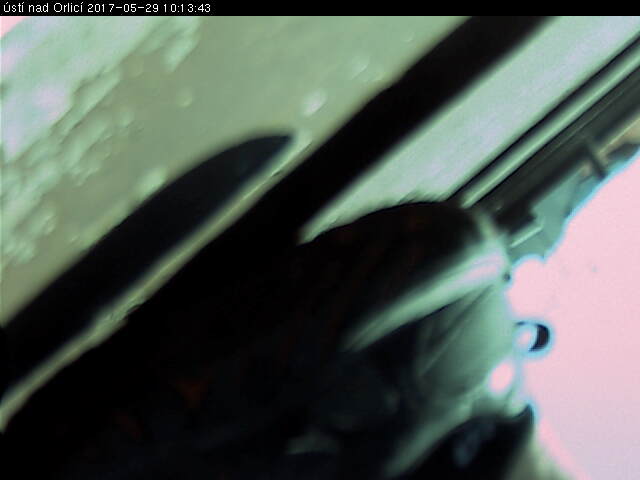Traditions
The very beginnings of the town existence date back to the second half of the 13th century when the ancient Slavic settlement called Oustí, whose population was mainly engaged in weaving crafts, began to grow under the reign of Přemysl Otakar II.
This development of crafts also includes the beginnings of the cultural life whose inseparable part was music. The Cecil’s Music Association was founded in November 1803. This association still exists today, which makes it the oldest Music Association in the Czech Republic which foc uses on church music.
uses on church music.
There were two musical ensembles established at the beginning of the 20th century. In 1909, it was the singers’ club called Lukes, named after Jan Ludevít Lukes - a famous and native singer from Ústí nad Orlicí, who was a member of the Prague Provisional Theatre; and then in the year of 1918, it was the Orchestral Association. The repertoire included compositions of Franz Schubert, Antonín Dvořák, Bedřich Smetana, Peter Iljic Cajkovski and Ludwig van Beethoven. The association reached such artistic quality that it could invite guests as Jaroslav Kocian, Bohuš Heran, or Rudolf Firkušný.
The rich musical past is being followed even by contemporary musical generations. This fact is demonstrated, besides others, by international music competitions for the youth - the Kocian’s Violin Competition and the Heran’s Violoncello Competition.

In recent years, the town regularly holds the national stage dance show - Dance, Dance - in the Roškot’s Theatre. Beside the town’s own ensemble, C-Dance, directed by Eva Veverková, there are also many other groups and soloists attending this show.

There is an event which is becoming more and more traditional and which is called Town in Motion – Week at Ease, and it is held in mid-June every year. This event features a range of sport and cultural programs held at the main square. The program presents guests from Ústí and those from all over the country, too.
When listing the events held in Ústí nad Orlicí, it is not possible to forget about the crafts of painting and building Christmas cribs whose beginnings are documented in the 18th century and which still persist. Precious works of art kept in the Town Museum and they are displayed fort the public every year before the Christmas.
 At the time of Advent, the festively decorated main square presents the event called Christmas of Ústí. They begin on the first Advent Sunday with ceremony of lightening the Christmas tree and continue with performances of singers, musicians and dancers every evening bringing the magical pre-Christmas atmosphere every year.
At the time of Advent, the festively decorated main square presents the event called Christmas of Ústí. They begin on the first Advent Sunday with ceremony of lightening the Christmas tree and continue with performances of singers, musicians and dancers every evening bringing the magical pre-Christmas atmosphere every year.
Little Weaving Houses
Until the late 19th century, there was a significant role of home-weaving crafts related to the major proportion of the town’s population. This activity was mainly concentrated in the lower part of the town, so-called Podměstí and it also considerably affected the town’s appearance. There were typical one-storey wooden houses with a high pitched roof based on a long rectangular ground plan with a large room in the interior where families not only lived but also weaved on weaving looms and made other work related to weaving. With factory textile production appearing in the last third of the 19th century, the hand-made weaving industry gradually disappeared. Many of the buildings ceased to exist in the late sixties and early seventies of the 20th century due to the construction of the main road through the town. Only a few houses in Zahradní Street still maintain their original appearance. They are now protected by the state commemorating the look of the weaving suburbs.
”Oustecké“ Christmas Cribs
It is said that long ago one of the drapers from Ústí went as far as to Italy with his goods and there he first saw the Christmas crib. This spectacle amazed him so much that he was thinking about it all the way home. And when he was talking about the beautiful Italian experience then later during evenings, he did not forget to mention that heart-breaking spectacle. Then he had a courageous idea to paint something similar for himself. And this is the way how the Oustecké Christmas Cribs appeared nearly three hundred years ago.
You can see the oldest figures of Oustecké Christmas Cribs in the town museum. They come from the 18th and 19th centuries and were made by Mr Domlátil and Mr Täuber. The best known one is the five-meter-long Christmas crib by Jarolím Štantejský. Jiří Knapovský is considered the faithful successor to the painting art - his Christmas cribs are exhibited in the museums of Ústí nad Orlicí, Vysoké Mýto, Třebechovice and also in the National Museum in Prague.
 |
 |
 |
Calvary
The original Calvary was built in 1753-1755 along the old road to Litomyšl, upon the initiative of Augustin Andres, a weaver. The Stations of this Calvary were placed along the road on the slope of a hill called Calvary. As for the original Calvary, there is only one station which is still standing, the one between the last two chapels belonging to the present form of this Calvary. The new Calvary was built in the period of 1852-1853 and consists of 11 simple chapels. All of them were restored in the year of 1994. The sgraffiti artwork for the interior of smaller chapels were made by Zdeněk Brožek. František Bečka, an art blacksmith, made a metal sculpture of Jesus Christ which was intended to be located in the 12th chapel. The thirteenth chapel is decorated with a painting called Descent from the Cross by Richard Pešek.
 |
 |
 |







